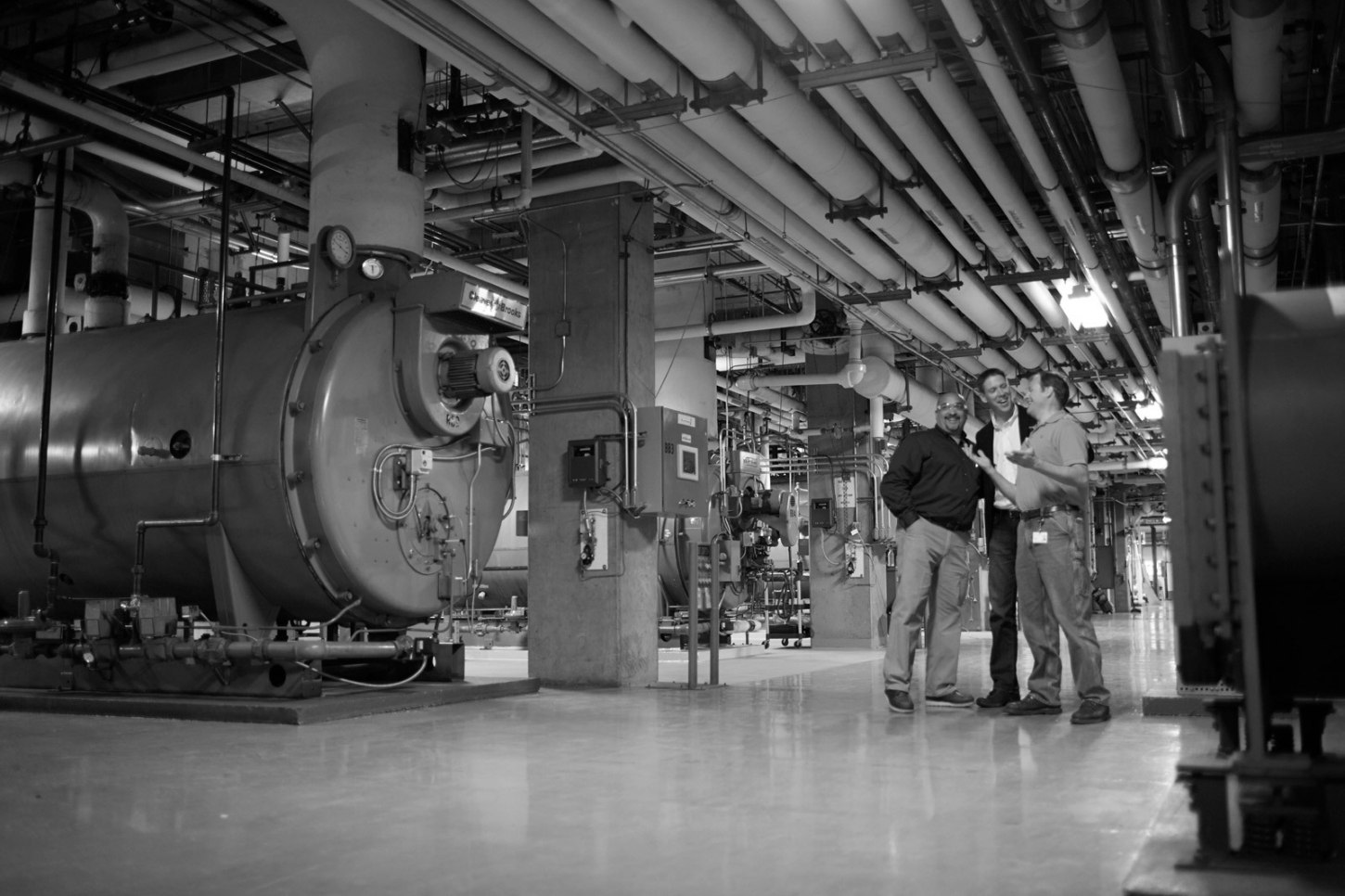Expanded in the 2022 Inflation Reduction Act, Section 179D offers financial incentives for energy-saving infrastructure when action is taken to enhance a building’s energy performance.
Who: Though it’s a tax incentive, this financial opportunity is uniquely accessible to both tax-liable AND tax-exempt buildings. So, whether your building is privately owned or belongs to a nonprofit; school; hospital; faith community; or local, state, or tribal government, read on to cash in.
What: Eligible energy improvements include building components like HVAC (Heating, Ventilation, and Air Conditioning) and hot water systems; lighting; and the building envelope (walls, roof, windows, and insulation).
How: When you partner with a reputable contractor like UMC to make these energy-saving upgrades, your projects can qualify for the top tiers of this substantial incentive. UMC’s Building Analysis and Modeling team has the expertise to fulfill the required energy modeling documentation. Then with your energy upgrade plan in hand, our installation pros are ready to deliver with project installation and ongoing service to keep your building in top tune-up. UMC’s start-to-finish expertise makes us your one-stop solution for IRA opportunities.
WHO: ELIGIBLE PROPERTIES
- Privately owned commercial-scale buildings like office buildings, retail spaces, and more can qualify for the 179D tax deduction. Unlike a tax credit, a tax deduction simply reduces how much of your income is subject to being taxed.
- Tax-exempt buildings can assign their would-be tax deduction to project designers like UMC: this opens opportunities for schools, hospitals, faith communities, charitable organizations, and facilities owned by any level of government, including tribal governments.

HOW: CLAIM INCENTIVES FOR CAPITAL UPGRADES THAT REDUCE YOUR OPERATING COSTS
To claim the Inflation Reduction Act’s Sec. 179D incentives, your projects must reduce your systems’ energy and power costs >25% by specific percentages beyond to the ASHRAE 90.1 reference standard. So that you can claim your project incentive through Sec. 179D, UMC will help you meet these requirements:
- A study performed by a qualified energy modeler
- Complete energy upgrades
- Help you prep for a site visit by a qualified individual to measure and verify
- Apply for and receive the incentive.

You could qualify for deductions of up to $5 per square foot of the building depending on the scale of your efficiency improvements and for meeting certain prevailing wage and apprenticeship requirements – as UMC has for decades.
ALL TOGETHER NOW: WIN WITH 179D INCENTIVES
- Capex to curb opex: The Inflation Reduction Act’s Sec. 179D makes some capital projects – like your building’s energy infrastructure - more affordable, decreasing operating costs.
- If you pay taxes, you’re directly eligible for the tax deduction.
- If your organization is tax-exempt nonprofit or owned by a municipal, tribal, or state government, you can claim incentives by transferring 179D tax deduction opportunity to the project designer.
- Lower operating costs today and for the long haul: Needing less energy to do what you do means lower electricity and natural gas bills today, plus buffering you from inevitable utility rate increases over time. What will you do with the newfound operating budget?
- Environmental Responsibility, Code Compliance: The 179D incentive gives you green (dollars) to go green with required carbon-cutting building upgrades. More specifically, these federal incentives help you more affordably meet emerging State and local codes, like Washington’s statewide Clean Buildings Standard for building performance, updates to the State Commercial Energy Code, and top-shelf municipal energy codes like that of the City of Seattle.
- Competitive Advantage: Energy-efficient buildings often have a competitive edge in the market. They can attract environmentally conscious tenants, boost employee pride, and enhance your business's reputation.
- Improved Comfort and Productivity: Energy-efficient upgrades can create a more comfortable and productive work environment. Better temperature control, insulation, and lighting can positively impact employee satisfaction and productivity.
WHY UMC?
The Inflation Reduction Act’s newly expanded 179D tax deduction represents a remarkable opportunity for commercial-scale buildings to affordably enjoy infrastructure renewal, meet sustainability goals, and fulfill emerging requirements. UMC specializes in these energy upgrades and the requirements needed, including energy modeling. We know how you can manage a building's energy to ensure optimal comfort and financial savings while tracking the overall carbon deduction and energy uses. Even better, you can meet the IRA’s top-tier financial incentives with prevailing wage and registered apprenticeship programs, where UMC has 103 years of success.
UMC is here to guide you through every step of the process, from assessing eligibility and identifying opportunities for improvement to ensuring that your projects meet the rigorous energy reduction standards required for the 179D tax deduction. Our dedication to delivering innovative and sustainable solutions by top-tier local experts aligns perfectly with the spirit of this federal financial incentive.
Reach out to UMC today to see how we can help your facility.
Questions or Comments?
For media inquiries or related questions, please contact info@umci.com
